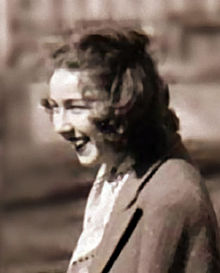Non-writers, or writers who don’t do fiction, often have a misconception about fictional forms. Short stories are seen as an apprenticeship of sorts—you start out writing them, and then graduate to writing novels. It makes sense, but it’s totally untrue. Short- and long-form fiction (i.e., stories and novels) are different in form, not just length, and to be good at one is not necessarily to be good at another.
For example, I have written fourteen novels (six of them published) but perhaps half that many stories, of which only one was published in a local literary magazine. It’s safe to say that short story is not my form. Some writers write both, but may not be equally gifted in both. The form imposes its own demands, related to but not always beginning with length; I’ve read novels that would have made better short stories, and vice versa. The story itself should dictate the form.
So, what’s this “form” I keep mentioning? It’s more like a single faceted gem than a string of smooth pearls; a snapshot rather than an album. The focus is intense, the characters are few, the action is limited but incisive. Short stories are like poems in their single-mindedness and elimination of all padding; every detail counts. And a good short story will explore a single theme in a way that’s complete and satisfying, so that you can’t imagine it being any longer. I think short stories much harder to write than novels, even though novels with their sprawl and shelf space are naturally more impressive.
They heyday of the American short story was probably in the 1950s, when big-name authors regularly graced the pages of general-interest magazines like The Saturday Evening Post, and fiction magazines for every taste crowded the news racks. Not coincidentally, that was around the time Flannery O’Connor was writing them. She mastered the form in her mid-twenties and went on to become one of its greatest practitioners ever.
As Jonathan Rogers mentioned in Emily’s interview with him, her proclivity for the “grotesque” (probably the word most-often used to describe her work) might confuse or even repulse readers who are new to her. The violence in her stories include children drowned and strangled, eyes gouged out, a woman gored to death by a bull. I was one of the confused; for me she was an acquired taste, but one I’ve come to appreciate greatly. Nobody wrote like she did, before or since. No one confronted the reader like she did. And no one could be so searing and yet so funny at the same time. (I describe A Good Man is Hard to Find as “the funniest mass murder story ever written,” and she herself confessed she couldn’t read it aloud without laughing.) Several years ago I tried to sum up her odd quality in an author profile: “The strangeness is organic, the very blood and tissue of its meaning: the inherently radical nature of Christian faith as O’Conner saw it.” In A Good Man Is Hard to Find, her character The Misfit muses that Jesus “thown everything off balance. If He did what He said, then it’s nothing for you to do but thow away everything and follow Him . . .” Jesus really did throw everything off balance, but most of the world, including Christians, live as though He didn’t. That’s the terrible paradox O’Connor saw at the heart of human existence, one she could best explore through short stories.
Jonathan Rogers recommends “Revelation” as a good place to start getting into Flannery O’Connor, so I just read it again with a view to noticing how it makes use of the short-story form.
Tight focus: encompasses a few hours of continuous action in three settings: a doctor’s waiting room, a respectable farmhouse, a hog barn.
Few characters: The story is told from the perspective of the protagonist, Mrs. Turpin. Her antagonist is an unattractive college girl named Mary Grace—but MG is actually a surrogate for the real antagonist. The supporting characters form a kind of background chorus commenting on Mrs.T.
Limited action: The action builds from an ordinary doctor visit to a climactic violent event, followed by an intense interior struggle. (Many short stories don’t leave room for a denouement, or “falling action,” but end with the climax. O’Connor stories usually allow space for some sort of resolution.)
Every detail counts: Well, let’s think about that. Here are some questions that occurred to me about those details: Why does the action begin in a doctor’s office? In what ways does the main character show, by thoughts and observations, how she thinks of herself? What’s the significance of the gospel song Mrs. T. finds herself singing along to? (It’s a real song; here are the lyrics.) Why is it important to notice what everyone is wearing? What alliances and conflicts develop in the waiting room during the course of ordinary conversation? What purpose does the black delivery boy serve? Might there be some significance in the college girl’s name? the book she’s reading? the color of her eyes? the color of Claud’s eyes? What might it mean (to Mrs. T as well as the reader) that of all the supporting characters besides her own husband, only Mary Grace has a name? In what ways does Mrs. T’s personality change after she’s attacked? Or is this really a change? When does the word revelation appear in the story?
A single theme, completely worked out: Before trying to state that theme, think about these questions: Why is important that this story is told from Mrs. T’s point of view? If you were a patient in the waiting room, would you like her? What’s your reaction to the other patients? How do Mrs. T’s imaginary conversations with Jesus compare with Luke 18:9-14? How does her true character emerge after her encounter with Mary Grace? Can you sympathize with her? Imagine the events of her evening as they might have passed without that encounter. Compare the burning of MG’s eyes with the burning of the sky at the end—what’s the significance? And finally, how does Mrs. T’s vision of all races and classes entering heaven compare with her recurring dream of all races and classes crammed into a boxcar headed for the gas chambers? What is the “Revelation”? Read Matthew 21:31. Then give thanks to God.
Short-form fiction appears to be a dying breed—I heard several years ago that it’s actually easier for a writer to sell a novel manuscript than it is to sell a short story. But brave literary magazines still carry them, and occasionally a volume of stories finds its way to print. Christine Farenhorst, who writes for a magazine I used to contribute to, has published two volumes of stories with historical settings, one centered on World War II (Afterwards I Knew) and one in the Middle Ages (The Merciful Eye). Mrs. Farenhorst was born in Holland and moved to Canada at the age of ten, when her father accepted a pastorate in a Reformed church. Her work is as steeped in Dutch Reformed tradition as O’Connor’s in Southern Catholic, and much deal less confrontational. But good fiction, even in the most parochial setting, always illuminates universal truth. I’ve enjoyed these stories very much. Though written for adults, they’re good reading for teens as well, and an opportunity to explore the conventions of the short story with an author less jarring than Flannery O’Connor.
Support our writers and help keep Redeemed Reader ad-free by joining the Redeemed Reader Fellowship.
Stay Up to Date!
Get the information you need to make wise choices about books for your children and teens.
Our weekly newsletter includes our latest reviews, related links from around the web, a featured book list, book trivia, and more. We never sell your information. You may unsubscribe at any time.
We'd love to hear from you!
Our comments are now limited to our members (both Silver and Golden Key). Members, you just need to log in with your normal log-in credentials!
Not a member yet? You can join the Silver Key ($2.99/month) for a free 2-week trial. Cancel at any time. Find out more about membership here.




